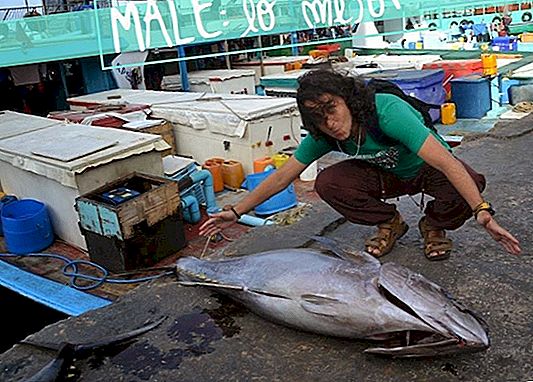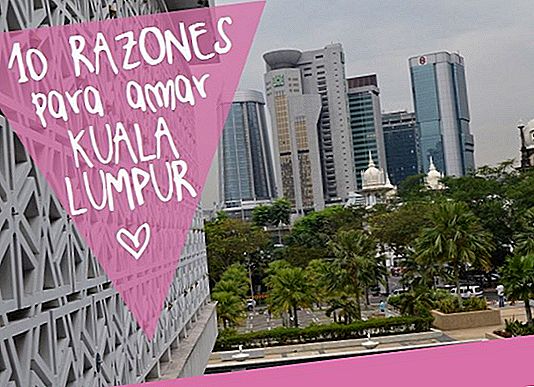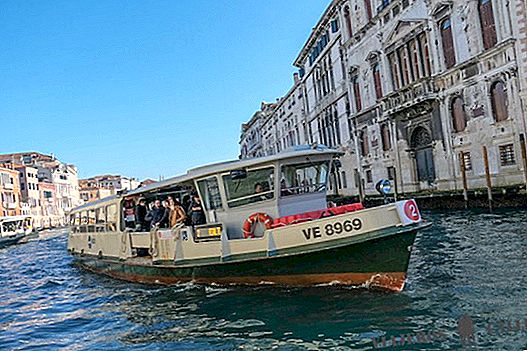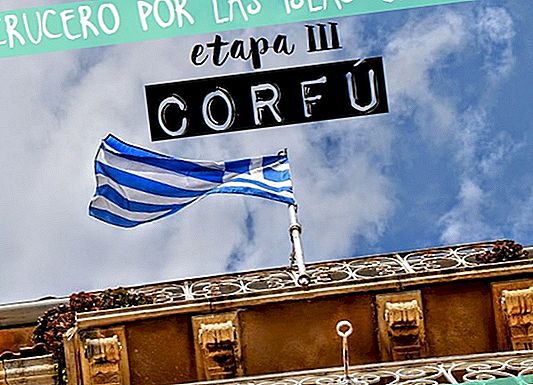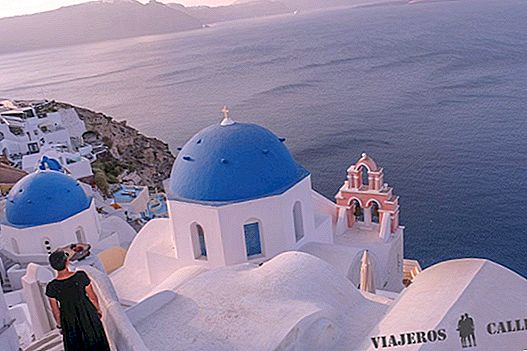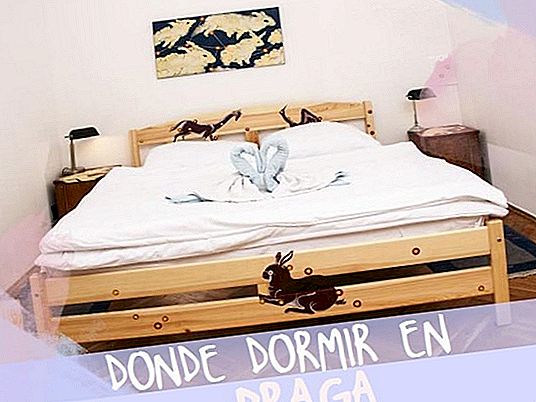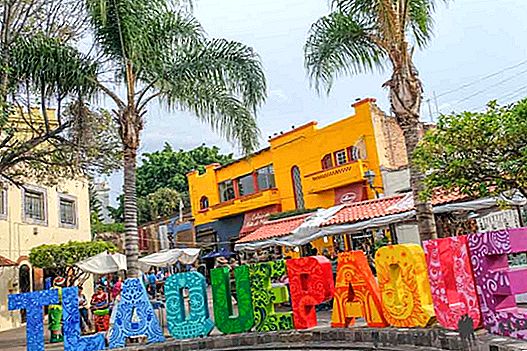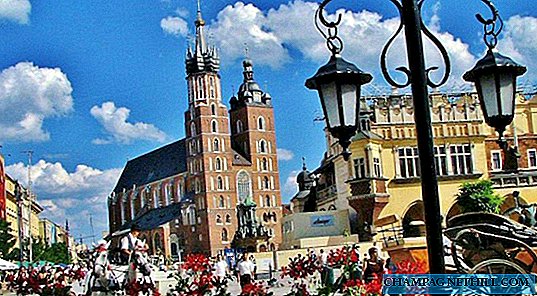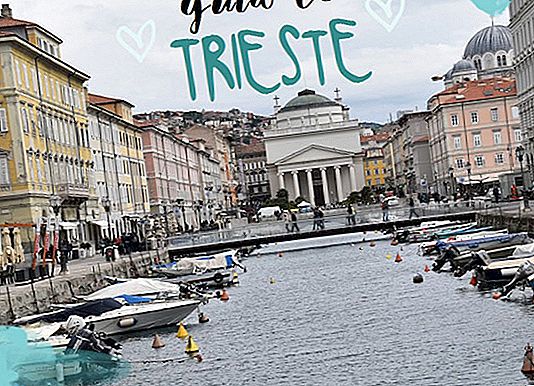
I am very angry that, outside of Italy (and even within Belpaese) my region is not known. The Friuli Venezia Giulia It is a misunderstood area. It is beautiful, it eats well, it is interesting, we have sea, mountains, hills, beautiful cities ... So why does nobody know it? No, really, what a rage! Go to Friuli Venezia Giulia ... insensatooooos!

Mmm, it will be that paradise is for a few elected (juas, juas), but as I am generous I will start talking about it ... first stop: Sad!
Trieste is a peculiar city. To start with, you have to talk about its location: it is a step away from Slovenia, it was part of the Astro-Hungarian Impero, without forgetting its Italian identity. Come on Trieste is a melting pot of cultures, very different influences and atmospheres among them.
Its air is special, there is no doubt, today you will notice it walking through its streets and in the past it was noticed by a few great artists who decided to settle in this city, of sea and borders, a long season. This is the case of James Joyce, Ernest Hemingway and Umberto Saba ... Trieste is inspiration, it is bora (its strong wind that when it blows it makes it pissed off), it is elegance and carelessness. All at the same time. Trieste is unique and certainly deserves a view.
In today's article we are going to tell you toooodo what we did on our last visit to Trieste, because if one day it falls short to meet her, it is enough to capture her soul and to want to return with more time.
Tip: if you have little time there is a bus with audioguide that takes you to know the main places of the city. Here I leave the info in case you are interested.
♣ Miramare Castle
For how many times you visit Miramare Castle, you will always want to return. The white of the castle contrasts with the intense blue of the Adriatic Sea and with the emerald green of the park that surrounds it ... it is a true past.
The castle was built between 1856 and 1860 at the request of Archduke Maximilian of Hasburg and his wife, Carlota of Belgium. In 1863 Maximiliano, also pressed by the desire of prestige and fame of Carlota, decided to accept the commission of emperor of Mexico, where he was waiting for a premature death ... and is that one of the legends surrounding the castle tells that everyone who passes a season living between its walls, will die early.
Maximiliano's case is not isolated: Duke Amadeo de Aosta, who lived a season in Miramare, was killed when he was taken prisoner by the English and General Friedrich Rainer, another tenant of the castle, was shot by Italian partisans. The best news? It is not a hotel!
Entering costs € 8, but as we visited before (and as, anyway, we believe that its main attraction is outside its walls) on this occasion we decided not to enter, it is best to surround it, walk through the gardens ( where by the way you can see subtropical plants) and breathe the calm of this enchanted place.
How to get to Miramare Castle?
We arrived by train from Udine and instead of getting off at Trieste station we did it in the previous one (Miramare), from here there is a pleasant walk of about 10-15 minutes to the castle. Since Trieste is very easy: you just have to take the bus 6, the ticket costs € 1.35 (60 ') or € 1.50 (75') and you can buy it at any tobacconist.
If you do what we do, after your visit to the castle you can go to the city on bus 6 for which you can buy the ticket at the Ostello Tergeste, on the Viale Miramare, on the way to the parking lot. The bus takes past the parking lot and leaves you at some stops in the center, including the central train station, where you can take other buses, or Piazza Oberdan.
♣ Risiera di San Sabba
The second visit that we propose in Trieste is not entirely pleasant but nevertheless we consider it essential… We speak of the Risiera di San Sabba, the only Nazi concentration camp in Italy. Here the political prisoners, the Jews and in general the enemies of the regime were arrested and prepared for their transfer to forced labor camps or extermination camps. This camp was not 'only' a place of passage for prisoners: it is estimated that the victims of the Risiera amount to 3,000-5,000, all killed by brutal beatings, with toxic gases or shot.
This triestino concentration camp had a crematorium oven (the only one in Italy) where the bodies of the victims were burned, so that there was no trace of barbarism. Today there is only the trace of the furnace (it was blown up by the Nazis before leaving the building), which has been transformed into a monument to the fallen.
In the Risiera you can visit, in addition to the cells of the prisoners and the common spaces, a very interesting museum that explains in detail everything that happened in those terrible years, also has testimonies of the prisoners and personal objects of the victims
The visit of the Risiera de San Sabba is free, although you can leave a donation in the museum.
How to get?
We did it from Miramare Castle, using bus 6, stopping at the central station and changing to bus no. 8 or 10. If you go by car the address is this: Via Giovanni Palatucci, 5.
More info: www.risierasansabba.it
♣ Trieste Center
Trieste, as we have said, is a very peculiar city, we could define it as “the least Italian Italian city”And it is that thanks to its Austro-Hungarian influences and its geography it is a mixture between Italian roots, Central European influences and Slavic air. Not to mention his strong Jewish tradition ... come on, Trieste is a melting pot of cultures that leaves no one indifferent.
The city center is impeccable, elegant, beautiful and alive, witnessing the golden age of the Austro-Hungarian empire, but it is enough to get lost in the streets to find corners that seem rather to leave the Balkans or even ancient Rome.
You cannot visit Trieste without strolling through the elegant Piazza Unità di'Italia that opens to the sea, or by the Molo Audace and the Large channel, one of the most beautiful places in the city. Nearby you will find the Orthodox Church of San Spiridione. Other essential visits in Trieste are the Cathedral, the ancient roman theater, the San Giusto Castle, wave Synagogue of the city (the largest in Italy), although as always it is best to lose yourself in the narrow streets of the center (if you have time, approach the Bookstore Antiquaria Umberto Saba Yet the Drogheria Toso, a vintage place full of curiosities).
♣ Historic cafes
The historic cafes of Trieste are a real wonder for coffee and literature lovers ... here, the main writers linked to Trieste (Joyce, Svevo, Saba, Stendhal ...) They spent hours and hours taking notes, writing new novels and receiving inspiration from this magnificent city.
The most important historical coffees are:
- Caffé San Marco: one of the most beautiful and famous of Trieste, was completely destroyed during World War I but reopened in the 1920s and has been running nonstop ever since. It is our favorite since it remains practically identical to when it was inaugurated, it also has a bookshop and Wi-Fi. (Via Cesare Battisti 18).
- Caffè degli Specchi: Thanks to its unbeatable location, it is the place where, always, the most important people of the city meet. (Piazza Unità d'Italia).
- Caffé Stella Polare: during World War II it was also a dance hall where the triestinas girls found a husband among the numerous American soldiers who frequented the coffee. (Via Dante Aligheri, 14).
- Caffé Tommaseo: the oldest of all (1830), elegant and sophisticated, where it seems that irredentist ideas have begun to take shape ... (Piazza Tommaseo).
♣ Tram Opicina
The last thing we recommend you to do in Trieste is to get on the Opicina tram, a historic, wooden tram that seems to leave directly from the past, which will take you to enjoy the most impressive views from the city (Obelisco stop). As a curiosity to tell you that during a section, the tram becomes a funicular that crosses a 25% slope!
Update October 2017: the tram is temporarily out of service… NUUUUUOOOOOO!
The tram (line 2) is taken at Piazza Oberdan and the ticket is the same as the buses (€ 1.35 for 60 ', € 1.50 for 75').
Tip: if you prefer you can take this tourist bus that will take you to know all the main tourist places of Trieste (it is a good option if the day is rainy!).
We can not finish the article without revealing some occasional place wanted by each triestino to fill their bellies ...
- To start the Buffet da Pepi (Via della Cassa di Risparmio, 3), one of the myths of Trieste, where to put on the boots with their cooked meats. The most typical thing is to eat a panino with porzina (pork sandwich), although anything else that comes out of Pepi's 'kitchen' is a guarantee ... since 1897!
- Fora per Fora (Via Armando Diaz, 9), is another classic, here you can try typical dishes (€ 5-10) such as Jota Soup (with beans, sauerkraut and potatoes), bread or plum gnocchi, porzine and crauti (pork and sauerkraut) or goulash with polenta.
- A cool foodie experience is to make a wine tasting. Here is an example.
- La Bomboniera (Via Trenta Ottobre 3), perfect for candy lovers: this bakery, which you will find in the center of the city, prepares delicious typical desserts (putizza, strucoli, pinza…).
- If you want to eat low cost we recommend the area of Viale XX Settembre, full of cheap places and the odd fast food.
- Another great option is to get to know some Osmiza (places found in the Carso area where you can try wines and homemade food). Of course, you must have a car or go on a tour (like this one) since there are no public means of transport that arrive at the Osmize.
We arrived by train from Udine. The ticket costs about € 7.5 and the trip takes 1 hour. There are several routes that connect Trieste with different areas of Italy. For more info: www.trenitalia.com
Without a doubt there is one thing that we recommend effusively: go to visit Fagagna, my people. Noooo (well, too), but if you're in Trieste you should go visit the Giant Grotta, an enooooorme cave that is in the surroundings of Trieste.
An excursion to know the Carso It is also a good idea though, perhaps it is best to combine Trieste with the visit of other parts of Slovenia (such as Lake Bled on tour) or Friuli Venezia Giulia (Grado is a very cool little islandUdine a small but cozy city or the mountain area is a real past, as well as the Friuli Collinare... but we'll talk about this in another post!)

